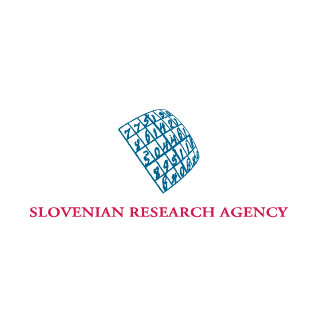Projects
Biotechnological Hub of the NIB (BTH-NIB)
The purpose of the investment project BTH-NIB is the assurance of the appropriate infrastructural conditions for the use of research and developmental opportunities in the fields of operation of the NIB.
Play Video About project Publication
Improved treatment and monitoring of Water Framework Directive priority pollutants
Project coordinator: PhD Ester Heath, IJS
Coordinator for NIB: PhD Metka Filipič
Code: L1-7544
Duration: 1. 3. 2016 - 28. 2. 2019
The authors acknowledge the project L1-7544 was financially supported by the Slovenian Research Agency.
Abstract
Emerging environmental pollutants are substances that have often long been in the environment, but whose presence and significance are only now being elucidated. They commonly derive from municipal and industrial wastewater (WW) sources and are of concern due to possible adverse effects on humans and non-target organisms. In Europe, the Water Framework Directive (WFD, 2000) established the legal basis for protecting and restoring clean water and lists 33 priority substances to be monitored and controlled in surface waters. In 2011 a further 15 chemicals were added to its “watch list”. These include, for the first time, three pharmaceuticals: the anti-inflammatory drug diclofenac (DF) and two steroid hormones: 17β-estradiol (E2) and 17α-ethinylestradiol (EE2). Other emerging pollutants like bisphenol A (BPA) and its alternatives (bisphenols, BP) are expected to follow.
Wastewater treatment plants (WWTP) are the primary source of micropollutants in natural waters and the deficiency in our ability to properly monitor these compounds and remove them completely from WW leaves a significant gap in our knowledge regarding their fate and effects. Data concerning DF, E2 and EE2 in natural waters and WW exists, but current analytical methods do not reach the environmental quality standards (EQS) and limits of quantification (LOQ) demanded by the WFD. Conventional WWTP are designed to remove solids, organic matter and nutrients from WW and are limited in their ability to remove non-target pharmaceutical residues. Conventional biological treatment yields poor and inconsistent removal of DF (avg. 30%). For E2 and EE2 between 75-90% is removed by either (bio)degradation or adsorption onto solid particles, but despite this higher removal efficiency and dilution upon entering surface waters, residual levels can still be high enough to pose a risk and exceed annual average surface water concentrations as defined by the WFD. For emerging contaminants like BPA alternatives analytical methods are yet to be developed and validated.
The proposed project attempts to address these problems by developing an efficient and practical way to monitor average concentrations of the three priority substances and selected emerging contaminants (e.g. bisphenols) in natural waters. First, we will develop ultra-trace level analytical methods (sub ng/L) combining traditional sampling methods and state-of-the-art passive sampling (PS) for polar or hydrophobic organic chemicals. Both methods will yield average compound concentrations over a specific time period as demanded by the WFD. We will then apply optimised analytical procedures to Slovenian surface and ground waters and collect data systematically over a period of one year to test for seasonal variations and to update the existing database on selected emerging contaminants.
The proposals second objective is to explore alternative WW treatments technologies to prevent emerging contaminant residues from entering the environment including advanced biological treatment, photocatalysis and cavitation, which we have already shown to be effective. We will then use the data to optimise our current lab-scale reactor design before upgrading the developed treatments to pilot-scale and finally to full-scale at our collaborating WWTPs. The efficiency of treatment will be evaluated on parent compound removal, formation of stable toxic transformation products and change in toxicity between WW effluent and influent.
This project has the following elements of novelty: the application of passive sampling in WFD monitoring, using cavitation/UV/TiO2 for the removal of micropollutants and sequential treatment including biological treatment, photocatalysis and cavitation. The high applicability of this project is shown by having 3 co-financiers, 5 end-users and 3 international research institutions who have signed an “Expression of interest for collaboration”.
Researchers - link to database SICRIS
Information about the project - link to database SICRIS


 Scope of NIB's accreditation is given in the Annex to the accreditation certificate and in the List of accredited methods for detection of GMOs and microorganisms – plant pathogens
Scope of NIB's accreditation is given in the Annex to the accreditation certificate and in the List of accredited methods for detection of GMOs and microorganisms – plant pathogens Holder of National Standard in the Field of Amount of Substance/Bioanalysis of Nucleic Acids/GMOs and Microorganisms
© 2023- National institute of biology, all rights reserved

